NCC: Land Lines – Tips and tricks for everyday nature photography
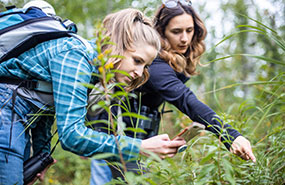
Volunteer and NCC staff identify a plant during a bioblitz in Alberta (Photo by Brent Calver)
Psst…not sure if you’ve heard of the Nature Conservancy of Canada’s Big Backyard BioBlitz taking place from July 28 to August 1, but there’s still time to participate. This could be your excuse to get outside, connect with friends or finally get some “me” time. It’s also a unique way to give back to your community and the nature that surrounds us.
A bioblitz is a volunteering effort to document as many species as possible during a set time. During the Big Backyard Bioblitz, we’ll document species across Canada together, and conservationists may one day use this information to target conservation locations for species at risk or to combat the spread of invasive ones.
All you need is a device that lets you take photos and an internet connection for uploading photos on the go or afterward on a desktop computer.
Sign up for the Big Backyard BioBlitz >
But I’ll let you in on an open secret: I’m not a great photographer and I sometimes struggle to keep my hand steady. Also, half the time I have no clue what the species I’m photographing is called, but when I take clear enough pictures, someone in the community can help identify my observation. I won’t let my technique and skill level deter me from participating. If you’re like me and just need basic nature photography tips, read on!
Photography, regardless of technique, helps me connect with nature
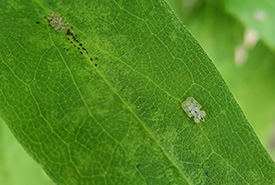
Two chrysanthemum lace bugs on a New England aster leaf. The yellow stippling on the leaf shows that the bugs have been feeding on it. (Photo by Wendy Ho/NCC staff)
When it comes to relating to and appreciating nature, photography has always found its way into my every outing. Whether it’s taking a photo now for species identification later, or just capturing the microcosm of activity in a habitat, I instinctively reach for my phone to snap a photo.
There are several things you can do to increase your chances of the species in your photos being identified when shared. In general, ensure the image is focused and not blurry and the subject is recognizable. And while in pursuit of your photo, make sure you are not trampling sensitive vegetation or causing stress to the species you are trying to photograph.
Photographing plants
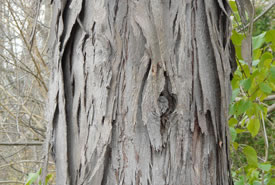
Shagbark hickory (Photo by Bernt Solymar)
- In moderately windy weather, wait for a break in the wind before taking the picture.
- If the plant you’re trying to observe is hard to get close to, consider taking a photograph from further away and cropping it down to the specific plant to make it more visible.
- Take multiple photos; an observation of one plant can include multiple angles and perspectives.
- Take close-up photos of the leaves, including both the back and front.
- Photograph the whole plant.
- Photograph the berries or flowers of the plant.
- When observing trees, take a close-up photograph of the bark.
- Avoid zooming out too far, as it can be challenging to identify which plant is being observed.
Photographing birds
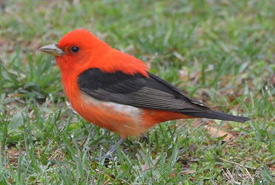
Scarlet tanager (Photo by Andy Reago & Chrissy McClarren, Wikimedia Commons)
- Capture the colour and shape of the bird.
- Take a photograph of its face.
- Take photographs from different angles.
- Crop any images that have a lot of background to make sure the bird stands out, but be sure to include some of the scenery to help demonstrate its location/habitat.
Birds (also applicable to animals) in motion:
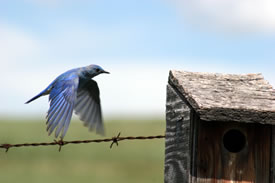
Mountain bluebird flying to box (Photo by Allison Haskell)
A camera may be more helpful than a smartphone to capture an animal in motion.
- Try to frame the animal in the middle of the viewfinder or screen.
- Track the animal with your body, trying to keep it in the centre of the shot.
- Use a setting, such as a sports setting, that allows you to photograph something in motion.
- Using a continuous shot setting can also help — the camera will take shot after shot once you take the photo.
- Start with photographing larger birds first to help improve your technique.
I hope these tips and tricks help you get photos you’ll be proud of contributing to the challenge or sharing with others.




